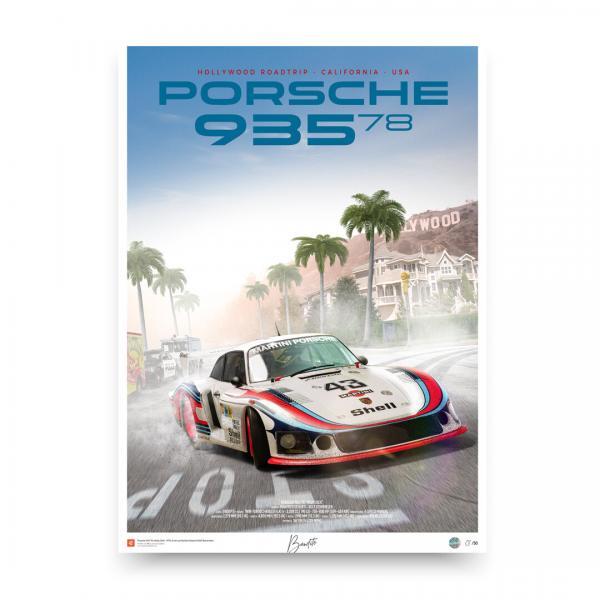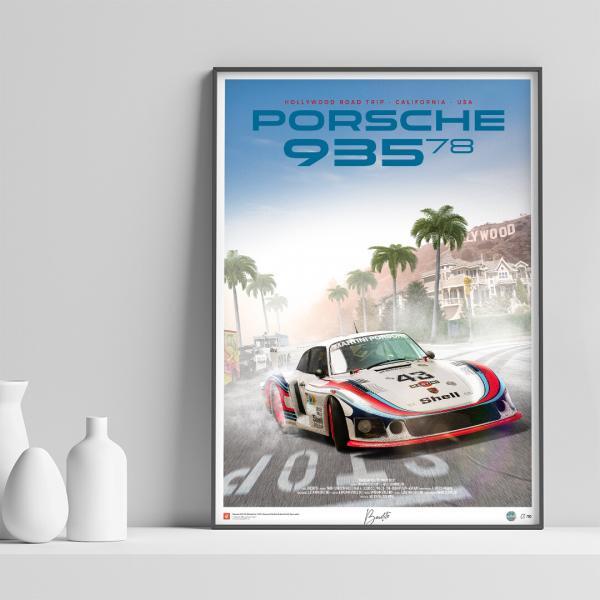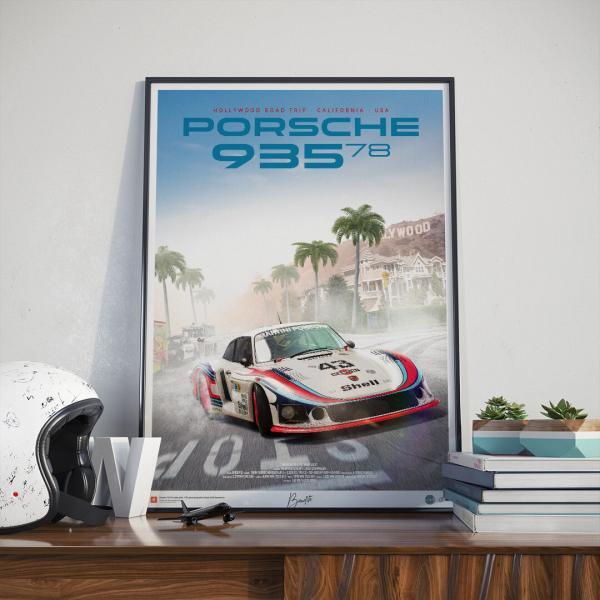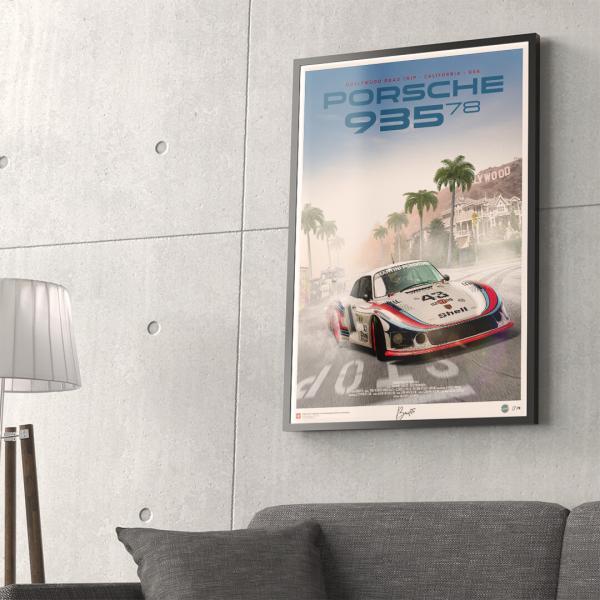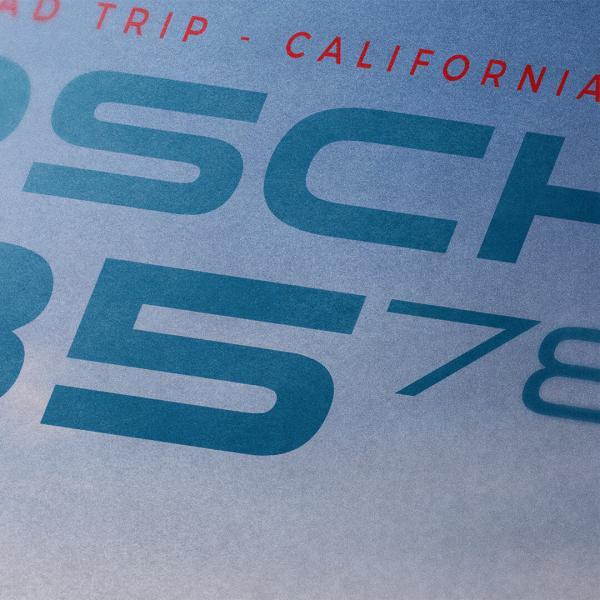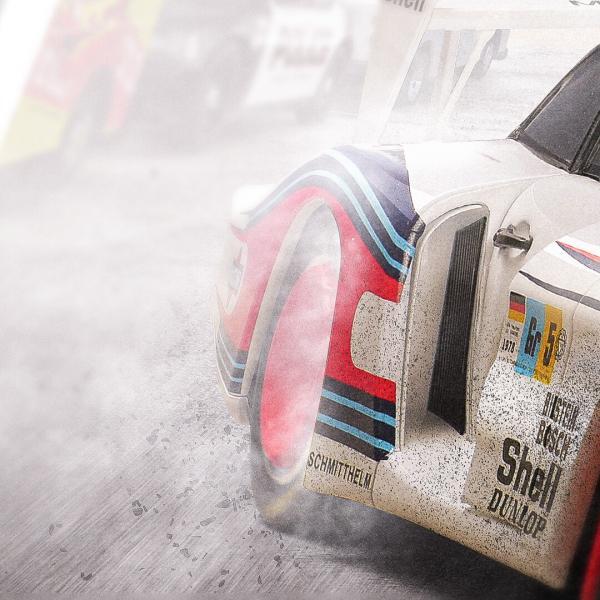Description
A bit of history

Porsche 935-78 Moby Dick
For 1978, a third and final version of the 935 was developed, the 935/78, intended only for Le Mans. Due to the head gasket failures of the 1977 version, Porsche parted with their air cooling tradition and introduced water-cooled cylinder heads in the 1978 engine, and equipped them with four valves as well. The capacity was enlarged to 3.2 L, increasing its output to 559–634 kW (760–862 PS; 750–850 hp).
The weight, which was less important on the Le Mans straights, had to be 1,030 kg now. As this track, like most, was run clockwise, the driver seat was moved over to the right side for better weight distribution and sight in right-hand corners, like Dunlop, Tertre Rouge and Mulsanne, another distinctive feature of the 1978 model.
The new car again took full advantage of a new loophole in the Group 5 rules, of which BMW took advantage of and cut the floor pan of their car to mount the exhaust system at the front of the engine. Keeping this fact in view, the whole floor pan of the 935 was cut away, and the body was lowered by 10 cm (3.9 in).
The gearbox was mounted upside down to reduce the angle of the drive shafts. As the rules did not limit the forward extension of the rear aerodynamic devices, Porsche even added fairings to the doors, bridging the gap between the front and rear fenders.
These were shortened later, covering only the front third of the doors. Because of its white color and long tail shape optimised for low drag, the 935/78 was often nicknamed Moby-Dick.
With this version, the pair of Mass/Ickx won the test race, the 6 hours of Silverstone Circuit, the pole (1:22,38) and fastest lap (1:23,98 or 202,519 km/h), being only 4 seconds slower than the corresponding times of James Hunt in the 1977 British Grand Prix, which covered only a quarter of the distance.
At the 1978 24 Hours of Le Mans, the 935 qualified third, barely beaten by a Renault Alpine and a 936. Compared to 1976, lap times were 15 seconds quicker now.
With the new 3.2 L engine,[2] it was the fastest car on the straight in Le Mans, recording a top speed of 367 km/h (228 mph), passing the prototypes of Renault Alpine, as well as the teammate 936, as these Group 6 cars had 2.1 L engines with just over 373 kW (507 PS; 500 hp), equal to normal 3.0 L engines.
The engine had to be replaced before the race, though, and with ensuing problems early in the race, the Moby Dick was no contender, finishing 8th behind three customer 935. In its third attempt, Renault finally managed to beat Porsche, and then went on to focus on F1.
Two of the three 936 and another Alpine occupied the other three places. Before being retired to the museum, the Moby Dick was also entered at Vallelunga and at the Norisring, the annual highlight of the DRM series, but the twisty track around the Nuremberg Reichsparteitag grand stand proved to be quite difficult for the Moby Dick, and it failed to finish.
History : See wikipedia article
Collection
Porsche 935-78 Moby Dick
Details
Size: Multi formats available
Print technology: UltraChrome HD 8-Color pigment ink
Paper: Hahnemühle Photo Rag® 188 gr

Production
Quantity: Limited edition (50)
Signed by Art Director: Yes
Numbered: Yes
Security hologram sticker: Yes
Framing: Not including
Delivery
Posters are packed and delivered in a protective tube to ensure a safe delivery.
Collection
Porsche 935-78 Moby Dick
Details
Size: Multi formats available
Print technology: UltraChrome HD 8-Color pigment ink
Paper: Hahnemühle Photo Rag® 188 gr
Production
Quantity: Limited edition (50)
Signed by Art Director: Yes
Numbered: Yes
Security hologram sticker: Yes
Framing: Not including
Delivery
Posters are packed and delivered in a protective tube to ensure a safe delivery.
